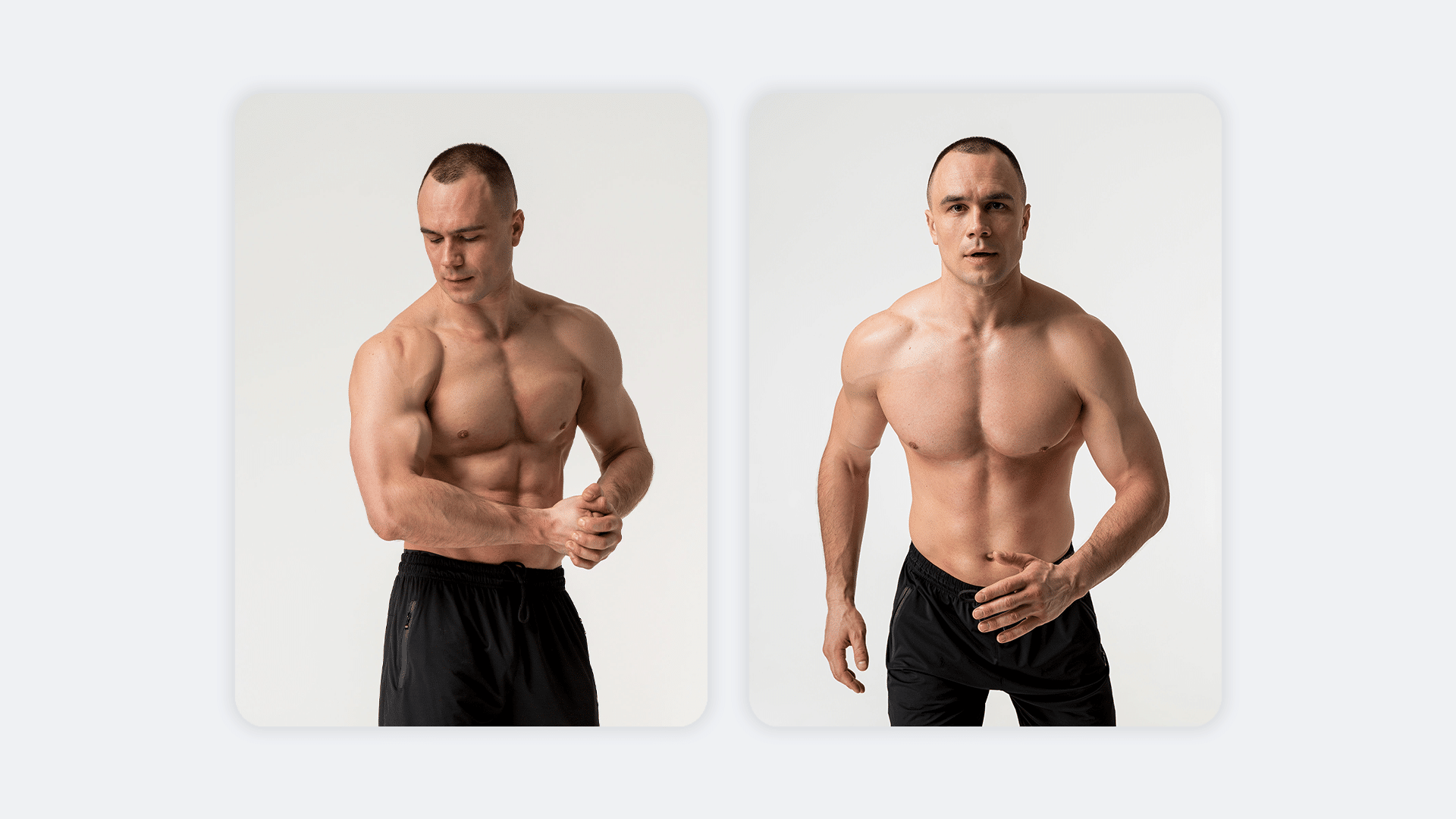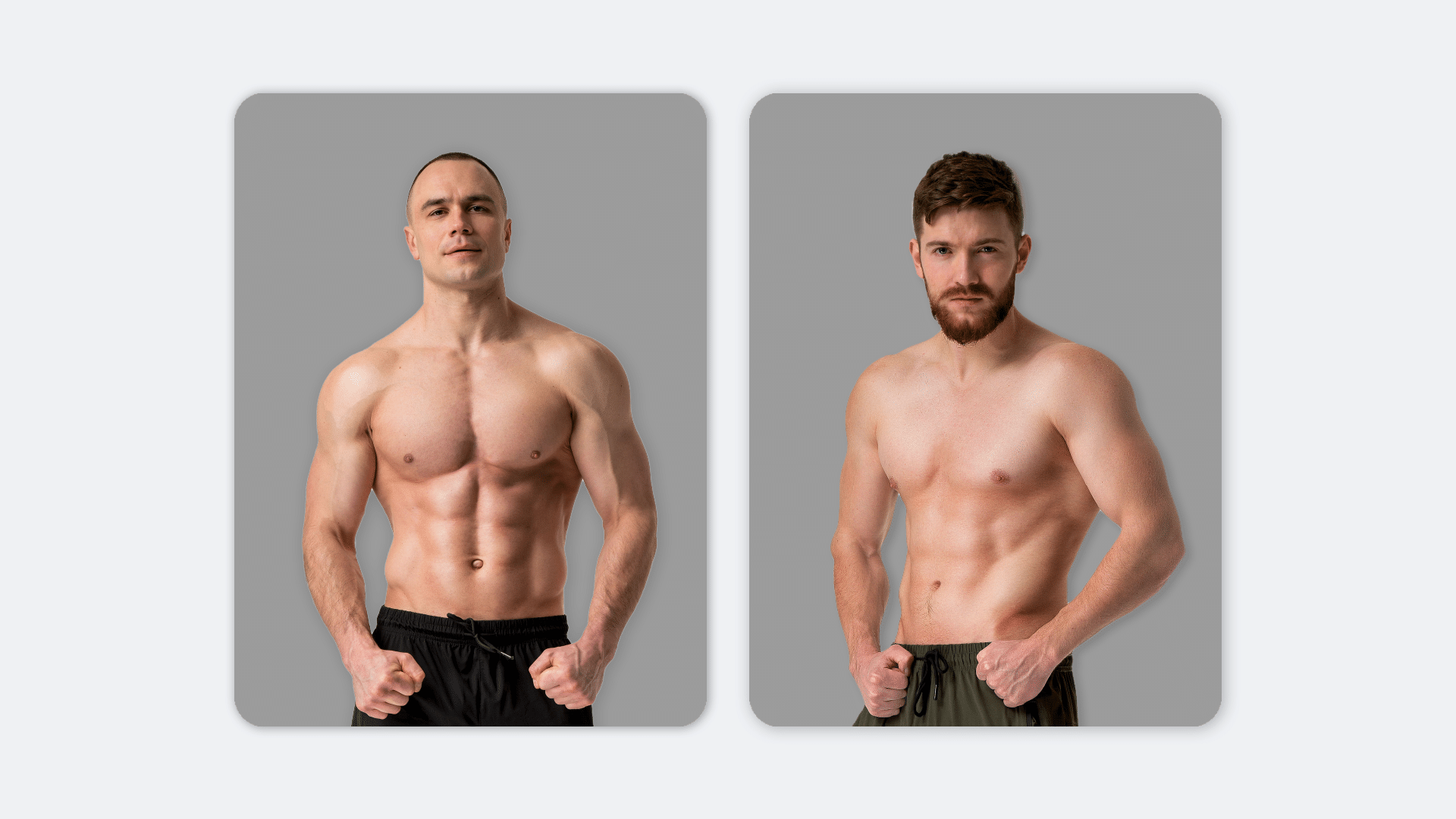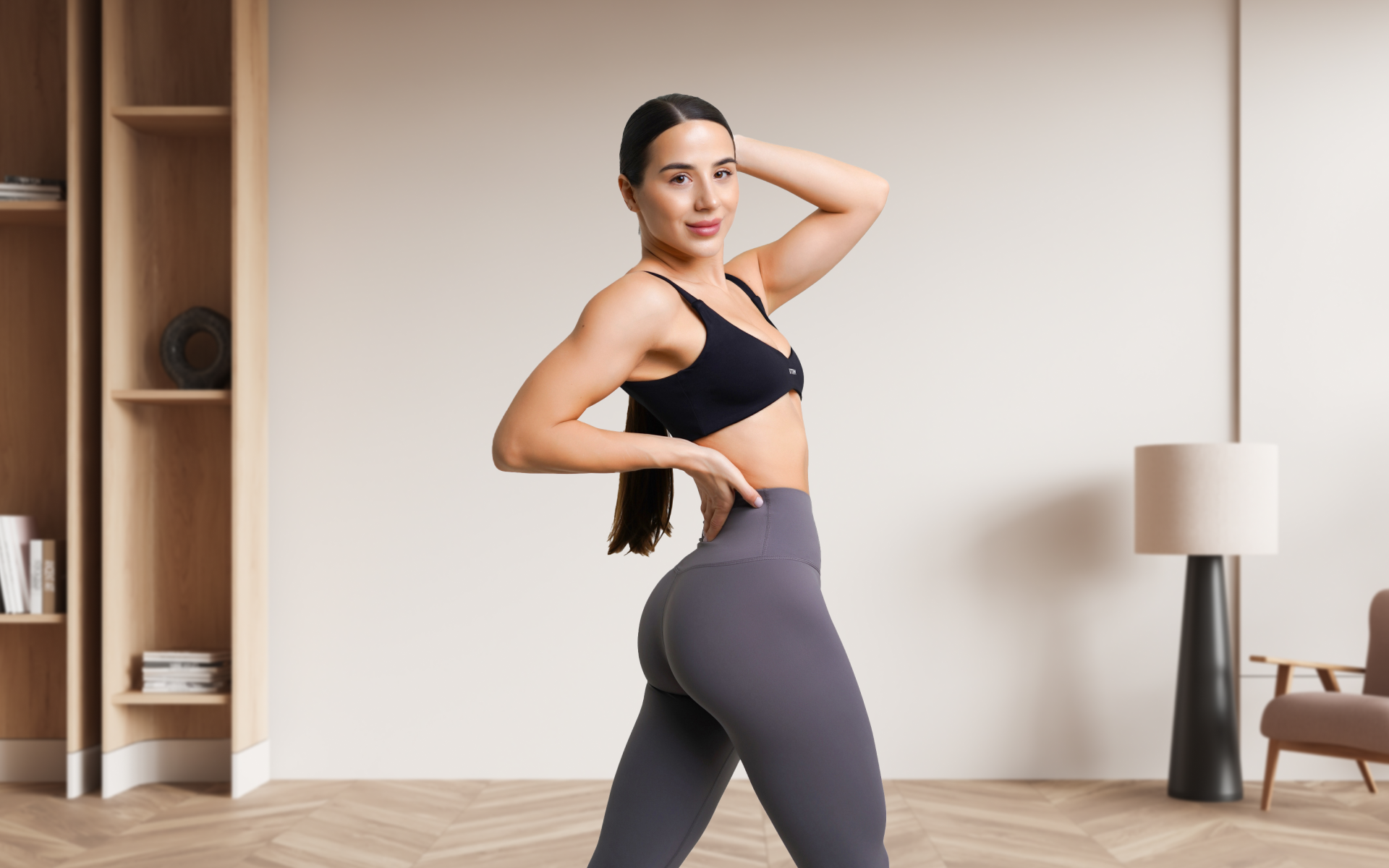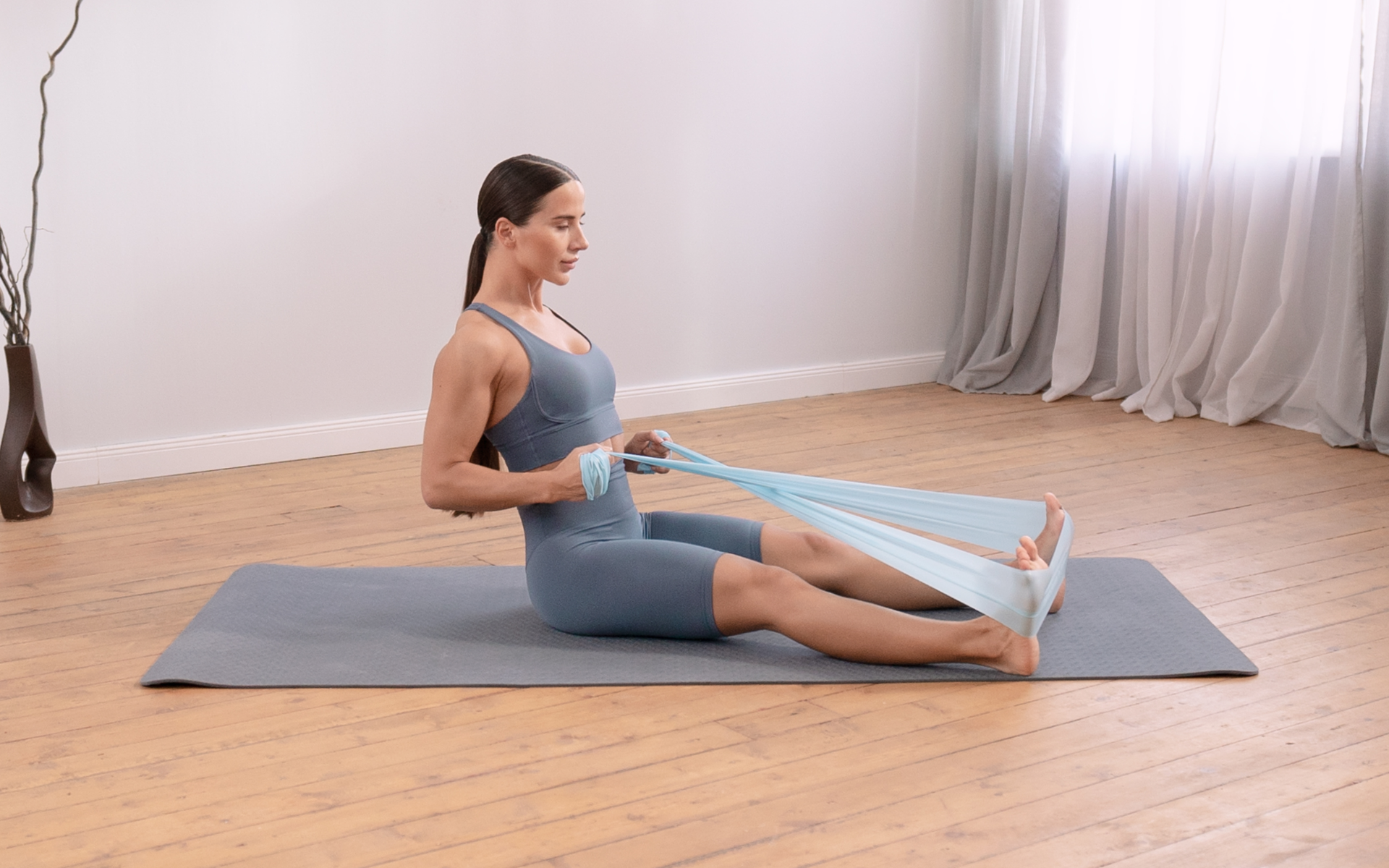Upper body strength isn’t just about having muscular biceps or a social media-approved physique. It’s about building a strong framework that supports everyday functionality—from lifting groceries to pushing that heavy door.
Granted, not everyone has the option of hitting the gym regularly. Here’s where the power of bodyweight exercises comes into the picture, a game changer in fitness that requires no equipment, minimal space, and can be done anywhere, anytime. This approach to fitness not only sculpts but also strengthens you, inside and out.
In this article, we’ll dive into the most effective upper body bodyweight exercises that have the power to transform your fitness routine. From push-ups that challenge every inch of your upper body, to dips that target your triceps, these exercises are designed to maximize results without a single dumbbell in sight.
Whether you’re a beginner or a seasoned athlete, these workouts promise to refine your strength and reshape your upper body using nothing but your own body weight. Get ready to push, pull, and lift your way to a stronger, more capable you.
How Do You Train Your Upper Body With Body Weight?
Training your upper body using only your body weight includes several exercises that workout your chest, shoulders, back, and arms. The secret to good training is to understand how to gradually increase your exercise volume, create variation, and keep building your routine. The ideas outlined below stem from well-researched exercise science principles.
Basic Rules of Bodyweight Training:
- Progressive Overload
To gain muscle and strength, you need to gradually increase the volume of your training. This doesn’t necessarily mean that your training will become more difficult. As you get stronger you will be able to handle a higher training volume at the same level of effort. This can be done by doing more repetitions, adding more sets, taking shorter breaks, making the exercises tougher, or any combination of these options (21). As a rule of thumb, a person should aim to keep increases in time, resistance, or intensity to 10% or less each week.(17)
- Variety
Different exercises help you reach muscles in new ways and keep you from hitting a workout rut. This also makes your workout more fun and challenging (20).
- Consistency and Frequency
Working out regularly is key. Try to train at least 3-4 times a week to really help your muscles grow and get stronger (23)
If you struggle to even flirt with the idea of giving up your favorite foods or working out till your legs give way – BetterMe app is here to breathe a fresh perspective into the way you view the weight loss process! Check out the app and experience the fun side of fitness and dieting with BetterMe!
Effective Upper Body Bodyweight Exercises:
- Push-Ups:
Normal Push-Ups primarily work your chest, shoulders, triceps, and core (19).
Variations like decline push-ups make it harder by lifting your feet, which works the upper chest and shoulders more.
- Pull-Ups and Chin-Ups:
These are great for your back and biceps (10).
Pull-ups (where your hands are facing away from you) focus more on the lats, while chin-ups (where your hands are facing towards you) place greater emphasis on the biceps.
- Dips:
These help to work your triceps, shoulders, and lower chest (11).
You can use parallel bars or even a sturdy chair.
- Planks and Side Planks:
Plank variations strengthen your core, and are effective for upper body strength and stability (9).
Try adding leg lifts or arm raises to make it tougher.
- Inverted Rows:
Rows help to focus on the back, biceps, and grip strength (18). Just as with pull-ups and chin-ups, your hand position affects which muscle groups are most active. An overhand grip will place the greatest emphasis on your lats and posterior deltoids, while an underhand grip will allow the biceps to contribute more. Accessing the biceps typically will mean the underhand grip will be easier for most people.
You can also do them under a strong table or on a low bar.
Planning Your Calisthenics Workout:
- As a beginner, start with basic exercises like push-ups (or kneeling push-ups), assisted pull-ups, and chair dips. Concentrate on doing the movements with proper form and controlled pacing for a moderate number of reps (8-15 per set).
- As you reach mid-level, add different versions and do more exercises. Try tougher moves like archer push-ups or L-sit pull-ups.
- For the advanced section, go for high-intensity and explosive exercises like clap push-ups or muscle-ups.
How Can I Build My Upper Body Muscles Without Weights?
Building upper body muscle without using weights is totally doable and can be quite effective when done right. Using bodyweight exercises along with techniques like keeping muscles engaged throughout each rep, holding them under strain for longer by incorporating slow eccentrics on isometric holds, and working them to the point of fatigue can really help build muscle and strength.
Time Under Tension
Research shows that keeping your muscles under longer tension during each exercise can really boost muscle growth. Try to move slowly and with control through the exercise’s full range of motion to make this happen. (14)
High Repetition and Fatigue
Without weights, increasing repetition ranges can be an effective progression. Keep in mind that there is a trade-off between strength and endurance, so if an exercise is so easy that you can do lots of reps (20+) before muscle fatigue or failure, it may be more beneficial to increase the difficulty of the exercise instead of adding more reps (8).
Some Strategies To Consider For This:
- Increase Repetitions and Sets: Do more reps and sets to tire out the muscles and help them grow. If an exercise is so easy for you that you can do 20+ reps before muscle fatigue or failure, then it’s time to stop increasing sets and reps, and start making the exercise more challenging. Keep pushing yourself to see gains.
- Utilize Isometric Holds: Holding a muscle tense in one position (like at the bottom of a push-up) can really boost muscle strength and time under tension (3).
- Advanced Bodyweight Movements: As you get stronger, move on to harder exercises like one-arm push-ups or pull-ups, which challenge the muscles more and promote growth.
- Reduce Rest Intervals: Taking shorter breaks between sets can make your workouts tougher and improve both endurance and muscle growth (16). As with increasing sets and reps, if an exercise is so easy for you that you can perform multiple sets with little or no rest, it’s probably more beneficial for you to make the exercise more challenging than it is to further decrease rest breaks. This is highly dependent on your training goals though!
- Routine Variation and Periodization: Mix up your routine every few weeks to challenge your muscles in new ways and keep progressing. Use periodization by alternating between periods of higher intensity with lower repetitions and longer rest breaks, and more repetitions at lower intensity and shorter rest breaks.
Read more: The Simplest Lower Back Calisthenics Guide for Beginners
Special Focus: Upper Body Workout for Women
Some women may skip upper body training, worrying about getting too bulky. Yet, upper body strength is equally important for everyone, as it improves everyday function and creates a balanced physique. Here are some exercises that are especially good for women who want to strengthen their upper body without heavy equipment (2):
- Body Saw: An intense core exercise that involves shifting your body back and forth in a low plank position, enhancing stability and abdominal strength.
- Inchworm: Combines forward bending with a walkout to a plank, targeting the hamstrings, core, and arms, and improving overall flexibility.
- Planks (along with variations): Basic planks strengthen the core, shoulders, and glutes; variations can include side planks and planks with leg lifts to challenge different muscle groups.
- Burpee with Push-Up: An all-in-one exercise that boosts cardiovascular fitness and builds strength across the chest, arms, core, and legs with an added push-up in each rep.
Special Focus: Calisthenics Chest Workout
Calisthenics involves using one’s body weight to develop muscular strength and endurance (21). A calisthenics chest workout focuses on exercises that increase muscle and strength in the chest using advanced bodyweight movements.
Archer Push-Ups: These widen the range of motion, putting more stress on one side of the chest at a time, which is great for building unilateral strength and muscle balance.
Typewriter Push-Ups: Shift from side to side at the bottom of the push-up to challenge the chest muscles in unique ways.
Explosive Push-Ups: Including clapping push-ups, these not only work the chest but also improve power and speed (1).
Integrating these exercises into your workout can significantly enhance your chest strength and muscle definition, making them a cornerstone of an effective upper body calisthenics routine.
Some of the strategies can be utilized to build your upper body without the use of weights are listed below:
Integrate High-Intensity Interval Training (HIIT) with Bodyweight
- HIIT Basics: Mix short, intense bursts of exercise like burpees or push-ups with short rest periods. This powerful combo helps burn fat and build muscle by really pushing your metabolism (4).
- Sample HIIT Workout: Do 30 seconds of burpees, followed by 30 seconds of push-ups, then rest for 30 seconds. Repeat this cycle for 10-15 minutes. It’s great for boosting both your heart health and muscle stamina in your whole body.
Whether you’re a workout beast or just a beginner making your first foray into the world of fitness and dieting – BetterMe has a lot to offer to both newbies and experts! Install the app and experience the versatility first-hand!
Nutrition For Upper Body Strength
- Protein Needs: Make sure you get enough protein to help your muscles recover and grow after workouts. Aim for at least 0.8 grams of protein per kilogram of your body weight each day, which is advised for regular muscle-strengthening activities (7).
- Hydration and Recovery: Drinking plenty of water and getting enough rest are key. Your muscles need time to recover and get stronger, especially after intense workouts, so don’t forget to take rest days.
By sticking with these strategies, you can effectively build upper body muscle using just your bodyweight. The secrets are staying consistent, gradually increasing your exercise challenges, and eating right. Whether you’re training indoors or outside, these approaches provide a solid base for building and toning your upper body muscles without weights.
Training Your Upper Body with Weights:
Training your upper body with weights is a direct and dynamic method to increase strength, boost muscle size, and improve overall health. Using equipment like barbells, dumbbells, kettlebells, and machines allows for targeted muscle growth across key areas such as the chest, shoulders, back, and arms.
-
- Frequency and Intensity: It’s important to work your upper body two to three times a week for best results (13). This schedule allows muscles to recover and grow between sessions. Each workout should vary in intensity, including both heavy sets with fewer reps and lighter sets with more reps to activate different muscle fibers and metabolic pathways.
- Volume and Overload: For muscle growth, it’s crucial to do enough sets and reps to trigger hypertrophy (muscle growth) processes in the body (12). Continually challenge your muscles by increasing weights, changing the number of sets and reps, or varying the speed of your movements to ensure steady growth.
Types of Movements:
- Compound Movements: Exercises like bench presses, shoulder presses, and rows work multiple joints and muscles at once. They are great for building overall strength and triggering hormone release. Typically, compound exercises should be performed first since they require the greatest energy expenditure and result in the greatest improvements.
- Isolation Movements: Exercises like bicep curls and tricep extensions are single-joint movements and focus on individual muscle groups. They are good for refining muscle shape and fixing any imbalances. Typically isolation exercises should be performed after compound exercises.
Example Upper Body Weights Routine:
Chest Day:
Barbell Bench Press: 4 sets x 6-8 reps
Dumbbell Flyes: 3 sets x 12 reps
Cable Cross-overs: 3 sets x 15 reps
Back Day:
Deadlifts: 3 sets x 5 reps
Bent-over Rows: 4 sets x 8 reps
Lat Pulldowns: 3 sets x 10 rep
Shoulders Day:
Overhead Press: 4 sets x 6-8 reps
Lateral Raises: 3 sets x 12 reps
Shrugs: 3 sets x 15 reps
Arm Day:
Bicep Curls: 3 sets x 10 reps
Tricep Dips: 3 sets x 10 reps
Hammer Curls: 3 sets x 12 reps
Maintaining proper form is crucial to avoid injuries and maximize muscle engagement (15). Techniques like engaging the core, aligning the spine, and focusing on controlled movements enhance the effectiveness of each exercise.
Read more: Calisthenics Shoulder Exercises: Techniques and Workouts
Do bodyweight exercises build muscle?
Yes, bodyweight exercises can help you effectively build muscle. As mentioned, these exercises utilize one’s own weight to create resistance and can be adapted to increase difficulty and stimulate muscle growth across various fitness levels.
The basic principle of muscle growth occurs through hypertrophy, which is the increase of muscle fiber size. This process is stimulated by creating sufficient tension and stress on the muscles (5).
FAQs
Is it OK to do upper body every day?
While it is recommended to do some form of exercise every day, it is usually advised to work on the upper body two to three times a week. Exercising the same area every day does not allow for the time needed for your muscles to rest and repair.
Can you get fit with only body weight?
Yes, one can solely rely on bodyweight exercises to get fit. In fact, most research points to the fact that bodyweight exercises have the potential to reduce body fat and improve VO2 max (a measure of aerobic fitness) and muscular endurance. One must also increase the degree of difficulty of the exercises to keep your muscles challenged and growing. (6)
Can I just train my upper body?
While you can definitely only train your upper body, it is best to couple it with full body and targeted workouts. This helps to maintain a balanced physique and optimal overall function.
Do pushups work biceps?
While your biceps will experience some engagement during a pushup, particularly when performing the variation where your elbows are tucked in close to your sides, it will be minimal compared to the activation of other muscle groups. The primary muscle groups active during a pushup are the pectorals (chest), anterior deltoids (front of your shoulder), triceps, and your general core musculature, such as the abdominals, hip flexors, and glutes.
The Bottom Line
It can be seen that upper body bodyweight training offers a versatile, accessible, and highly effective way to build strength, enhance muscle mass, and improve overall fitness. Whether you’re utilizing weights or relying solely on bodyweight, these exercises allow you to achieve your fitness goals without the need for expensive equipment or gym memberships.
By understanding the principles of progressive overload, muscle tension, and proper form, and by incorporating a variety of exercises that target different muscle groups, anyone can develop a strong, toned, and functional upper body.
DISCLAIMER:
This article is intended for general informational purposes only and does not serve to address individual circumstances. It is not a substitute for professional advice or help and should not be relied on for making any kind of decision-making. Any action taken as a direct or indirect result of the information in this article is entirely at your own risk and is your sole responsibility.
BetterMe, its content staff, and its medical advisors accept no responsibility for inaccuracies, errors, misstatements, inconsistencies, or omissions and specifically disclaim any liability, loss or risk, personal, professional or otherwise, which may be incurred as a consequence, directly or indirectly, of the use and/or application of any content.
You should always seek the advice of your physician or other qualified health provider with any questions you may have regarding a medical condition or your specific situation. Never disregard professional medical advice or delay seeking it because of BetterMe content. If you suspect or think you may have a medical emergency, call your doctor.
SOURCES
- 12 pushup variations to try ( n.d., trainics.se)
- 21 Exercises to Try If You’re Looking for Some Awesome Arms Workouts for Women (2022, self.com)
- Effects of Different Isometric Training Programs on Muscle Size (2023, ncbi.nlm.nih.gov)
- High-intensity workouts can help you get fit fast (2022, health.ucdavis.edu)
- How do muscles grow? (2004, unm.edu)
- How Fit Can You Get From Bodyweight Exercises Alone? ( 2021, nike.com)
- How much protein do you need every day? (2022, health.harvard.edu)
- How to Build Muscle with Bodyweight Exercises (2023, shape.com)
- How to Do a Plank ( 2024, verwellfit.com)
- How to Do Pullups ( 2021, verywellfit.com)
- How to Do Triceps Dips (2022, verywellfit.com)
- Longer repetition duration increases muscle activation ( 2022, scielo.br)
- Muscle strength gains per week (2023, ncbi.nlm.nih.gov)
- Muscle time under tension during resistance exercise (2011, pubmed.ncbi.nlm.nih.gov)
- Prevent Injuries with Proper Form During Workouts ( 2021,nus.edu.sg)
- Profiling Rest Intervals between Sets and Associated Factors in Resistance Training Participants ( 2018, ncbi.nlm.nih.gov)
- Progressive Overload Explained (n.d., blog.nasm.org)
- Six Benefits of Inverted Rows (2024, barbend.com)
- The anatomy of a push-up (n.d., blog.nasm.org)
- The effect of variety on physical activity (2013, pubmed.ncbi.nlm.nih.gov)
- What is a progressive overload workout plan? (2022, medicalnewstoday.com)
- What Is Calisthenics? ( 2023, health.com)
- Workout Consistency Is The Most Important Factor For Muscle Growth ( 2019, womenshealth.com)









